Boats & Accessories
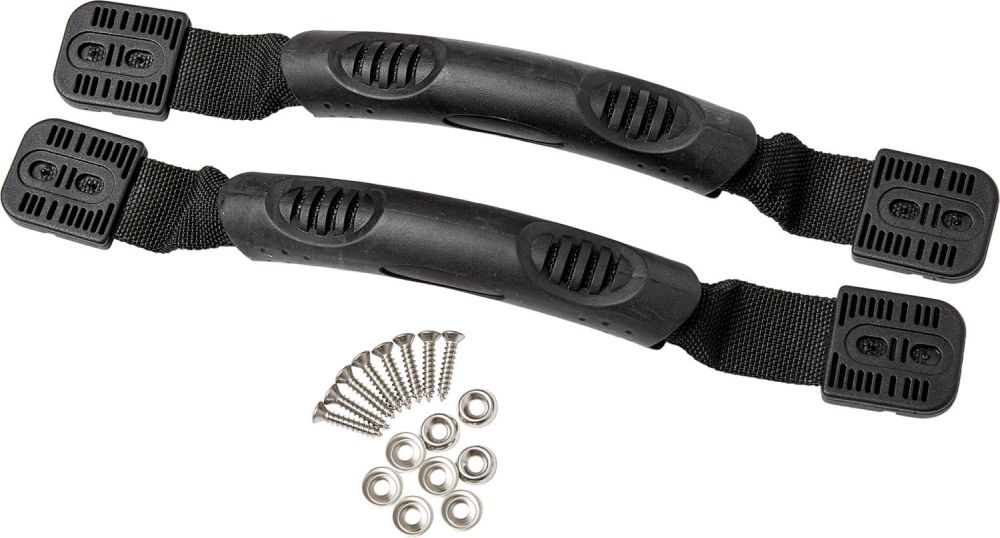
Real side handles make necessary tie-down points for transport, and are well worth the cost of adding them if your boat doesn’t have them. This is a good model that uses two screws at each end to secure it. Even better, if you can reach inside the hull, use bolts and washers instead of screws. Kayak plastic is pretty thick though, and the screws have not been a problem.
More: Handles …
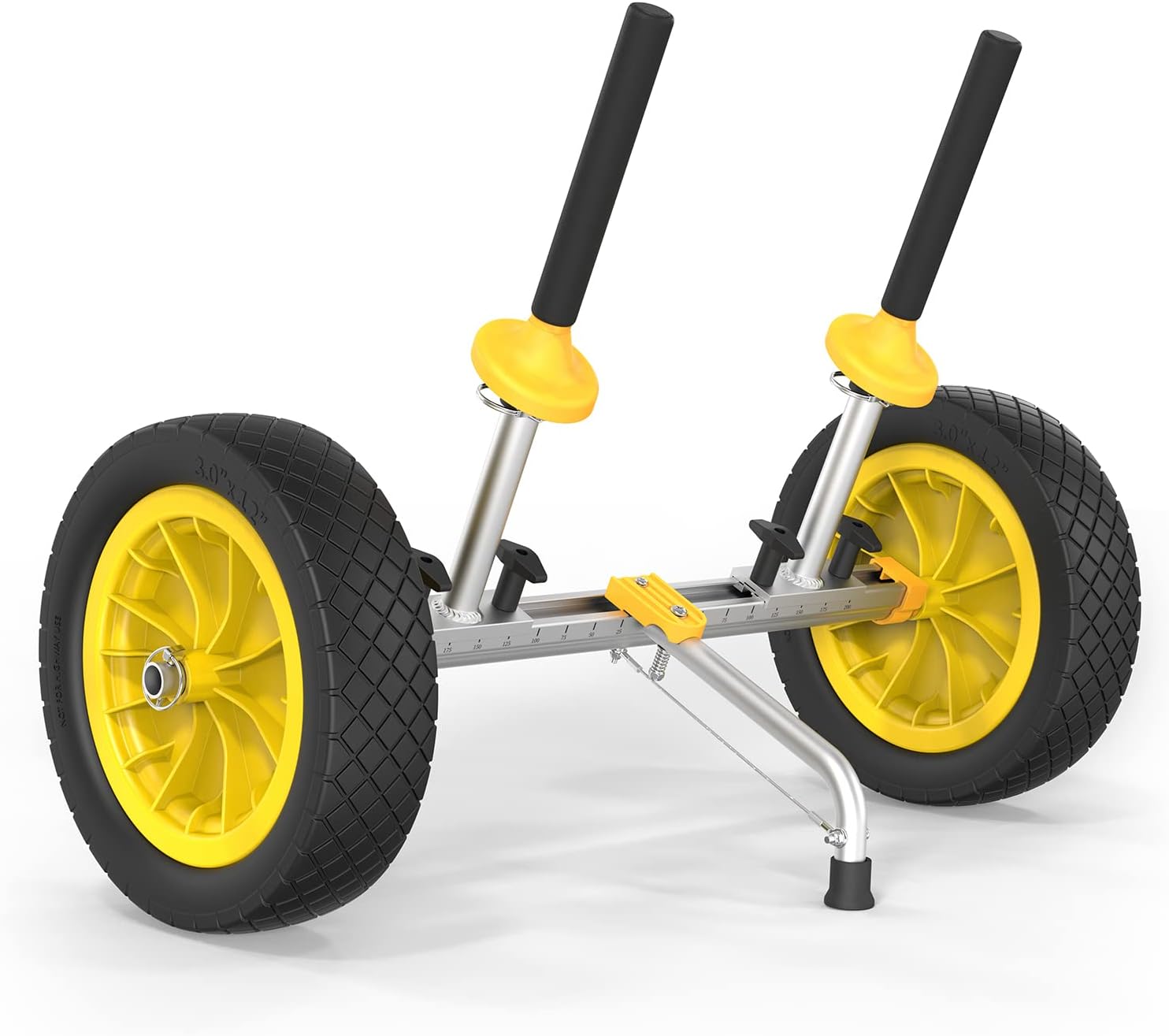
This is a scupper cart. It is a set of wheels that fits in the scupper holes of the kayak and lets one person wheel it around like a wagon. The big advantage of this sort of cart is that when you get to the water, you can pull it out, flip it over, and stick it in the top of the kayak. Then off you go – no need to double back to put the cart away. Also, you’ll have it if you get somewhere that you might want to portage.
More: Scupper Cart …
If you go online, you can find a good deal of kayak snobbery. If you are going fishing in the ocean, or white-water, then yes, you could justify a better boat. But if you are just going on calm inland water, you really can’t beat Lifetime boats for price, handling, and features. And they are indestructible. Lifetime also makes Emotion kayaks.
One more note: if you are going inland, then yellow is a great color for a kayak – it makes you easy to see and hopefully harder to run over by drunken motorboats. But if you are going in the ocean, yellow has a major drawback: Sharks are fascinated by yellow. In World War II, the Navy found out that yellow life jackets were a very bad idea. Online, you can find multiple videos of sharks harassing kayaks, and in every case it is a yellow hull. I even have personal experience: Once on a dive I got into a school of spiny dogfish, and they took turns trying to steal any yellow gear I had. Fortunately, dogfish are small and harmless, and the whole thing was kind of comical.
More: Plastic Kayaks …
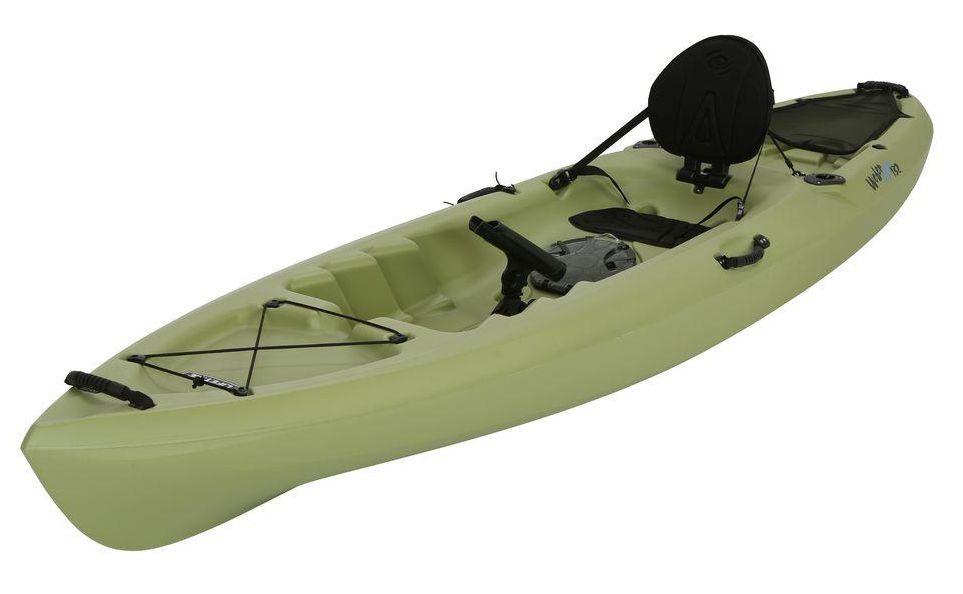
Specs:
- Length: 11 feet overall
- Beam: 30″
- Height: 14″ (hull only)
- Weight: 59.3 pounds
- Capacity: 300 pounds
More: Lifetime Weber Angler 110 …
This is for sit-on-top kayaks with closed hulls. Open-hull sit-inside kayaks don’t really need hatches.
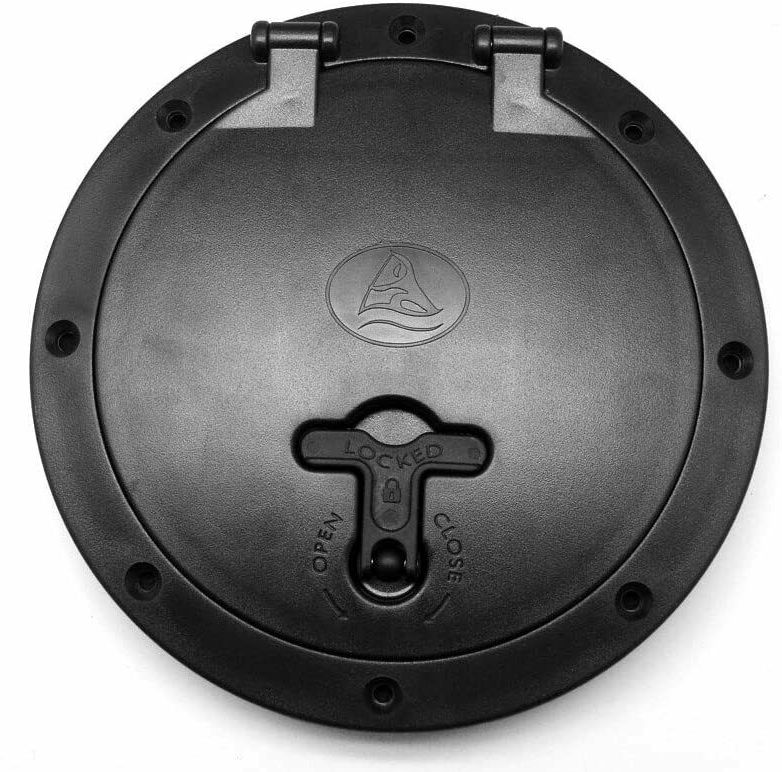
You can order any kind and size of hatch on eBay. They are easy to install – just trace the hole on the hull and cut it out with a jigsaw. A hatch like this one has a storage bag for small items like keys and phone, which removes for access to the inside of the hull.
More: Hatches & Storage …
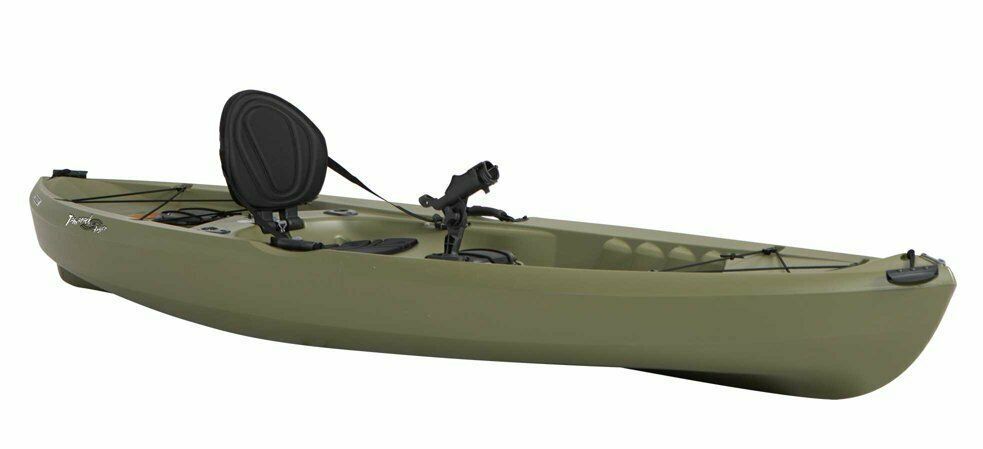
Specs:
- Length: 10 feet overall
- Beam: 32″
- Height: 14″ (hull only)
- Weight: 51 pounds
- Capacity: 275 pounds
More: Lifetime Tamarack Angler 100 …